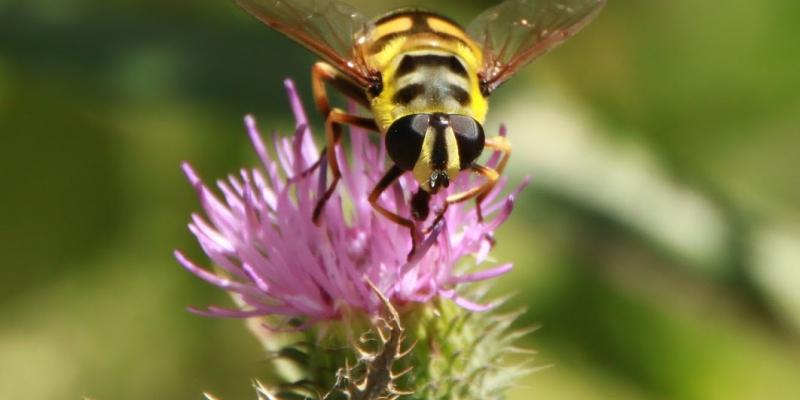
Brad, suggested I explain the life cycles of the bees and wasps. Now at first I was, like…“Really?” Cause that seems like something I would do if I was down to my last Ambien and it was late at night. But the more I did research into this subject the more it became quite comical to me. And understanding ones foe, helps eliminate fear and creates more of an understanding and sort of respect.
Physical Differences:
First off, the Wasps, apparently are the super model of the stinger family. They have a slender body with a narrow waist, and long slender, cylindrical legs, and appear smooth-skinned and shiny. The boldfaced hornets, paper wasps, and the more fashion forward – Yellowjackets, are the most common types of wasps encountered by people.
Bees- They are more of your hard working uncle Vinnie type of the stinger family. They are robust-bodied and very hairy compared with wasps. Their hind legs are flattened for collecting and transporting pollen. Although not as sleek as their wasps cousins they are very important pollinators and play an important roll in our eco-system.
Wasps and the Picnic Basket
During the late summer and into the fall when people are trying to squeeze that one last family reunion, or vacation in before its back to school, yellow jackets become aggressive scavengers and frequently disrupt outside festivities where food or drink is served.
Control of this Diva like behavior is difficult, as there are no insecticides that effectively repel or discourage them.
The best strategy is to minimize attracting them. Wait to serve food and drink until people are ready to eat. Promptly put away food when done and throw garbage into a container with a tightly fitted lid. I also recommend to pour all pop from cans into a cup as well, to reduce the visual blocking the can lids provide for wasps when they slip into your pop can and you try taking another drink just find their antennas tickling your lip before you get stung by one for unknowingly trying to drown it! If a wasp flies into your food, wait until it flies away or gently brush it away. If you crush them , they will give off an alarm scent that will attract other wasps. Not to mention how attractive a squashed wasps looks in Aunt Ethel’s apple pie she just made for you.
The Cycle of Life
Wasps have annual colonies that last for only one year. The colony dies in the fall with only the newly produced queens surviving the winter. With the exception of honey bees which are perennial insects with colonies that survive more than one year. Honey bees form a cluster when hive temperatures approach 57 degrees Fahrenheit. As the temperature drops, the cluster of bees become more compact and consume honey and generate heat so that those in the cluster do not freeze. Hmmm, they might be on to something.stop shaving and eat sweets for the winter? Uh…ok guess not. As long as honey is available the colony can withstand temperatures down to -30 degrees or lower for extended periods. Honey-cicles…hmmmm, not bad guys.
If any of these interesting facts still don’t make you feel comfortable with your flying friends, feel free to call Interstate Pest Management for more detailed info or options in thwarting our little pollinating buddies from being too much of a nuisance in your back yard. DO NOT try removing a yellow jacket nest on your own as they can be extremely aggressive at times. Let a protected professional give those guys an eviction that is safe for you and your family. Call 1-888-844-4476 for more information or free quotes.